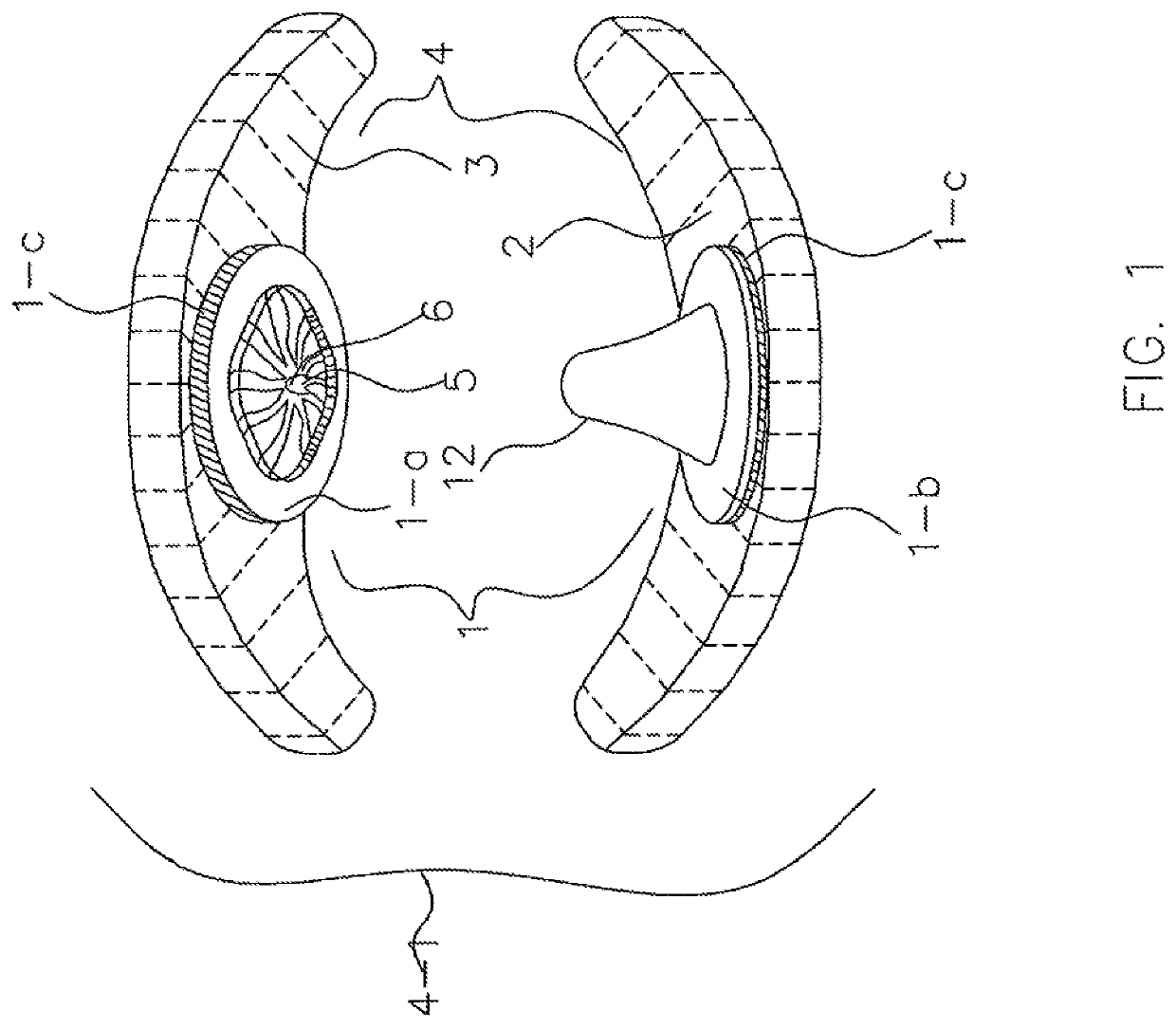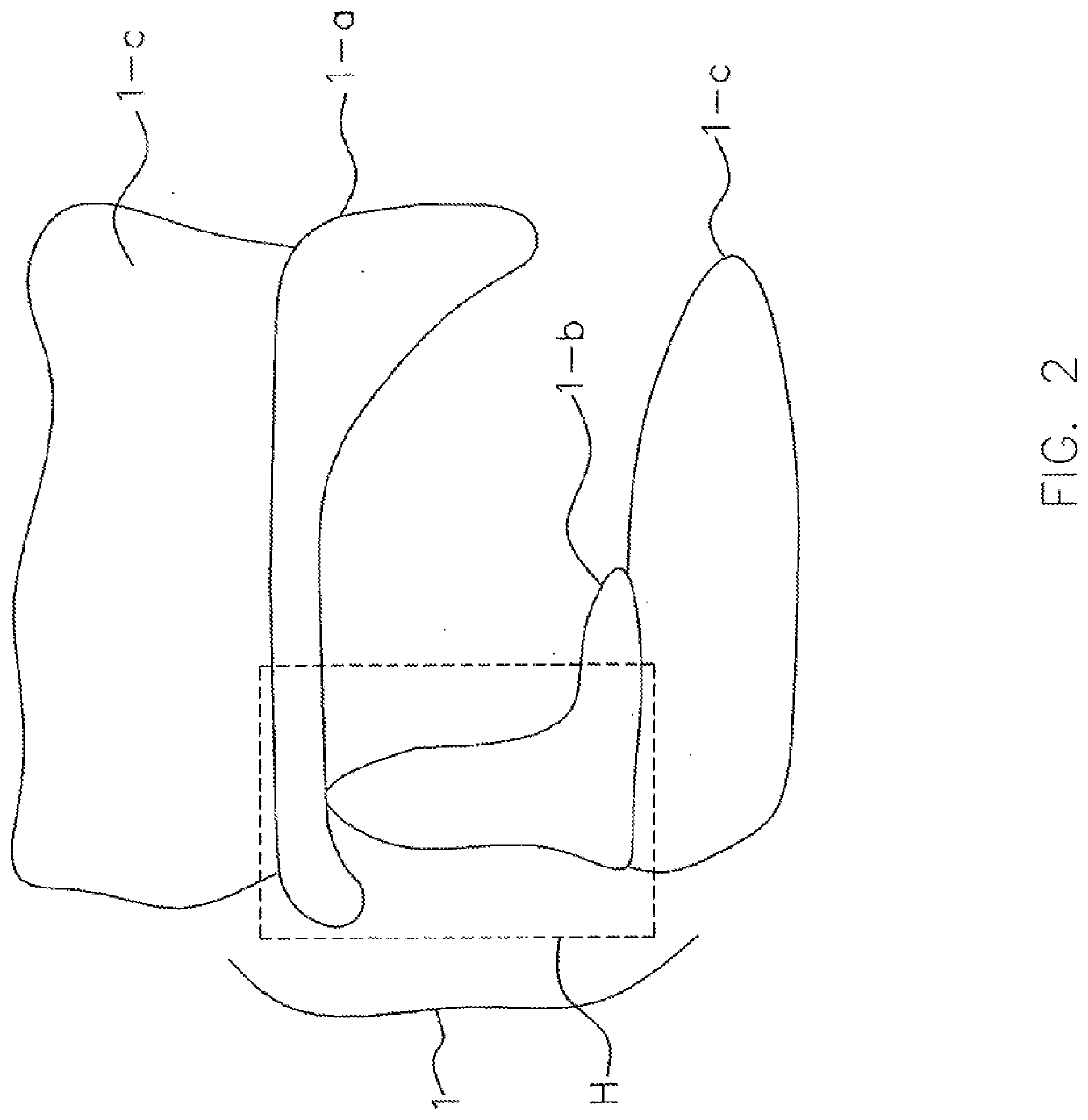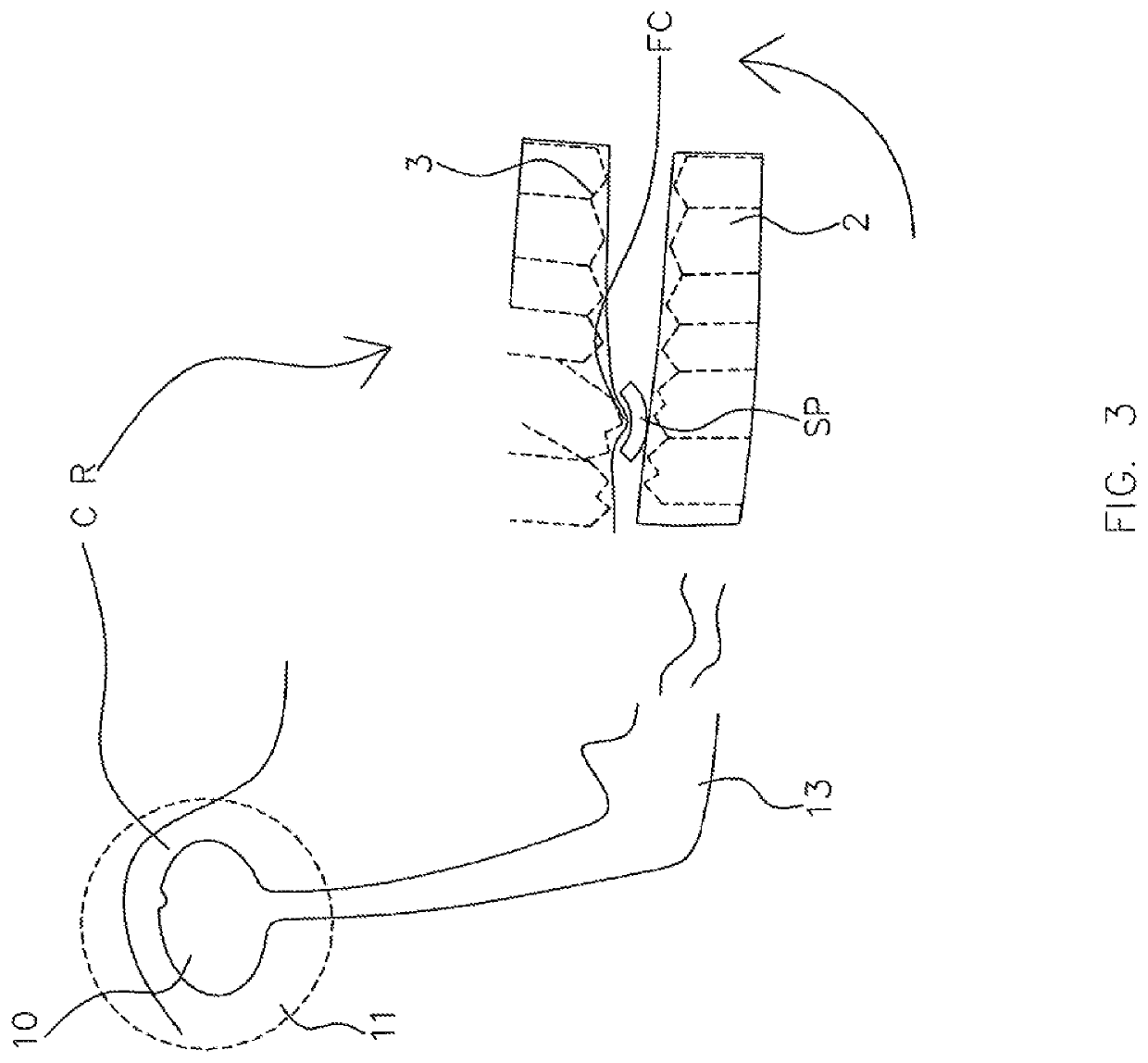Oral appliances, packages, systems, and components
- Summary
- Abstract
- Description
- Claims
- Application Information
AI Technical Summary
Benefits of technology
Problems solved by technology
Method used
Image
Examples
Embodiment Construction
[0026]FIG. 1 is an exploded view of the Anterior Guidance Package (AGP) according to current invention connected to a mandibular retention piece and a maxillary retention piece of a splint.
[0027]FIG. 2 is a cross-sectional side view of the Anterior Guidance Package (AGP) assembled in its correct orientation by a removable holder before it is indexed onto the maxillary and mandibular retentive pieces.
[0028]FIG. 3 is a perspective cross-sectional view of the mandible hinging up in centric relation finding the first contact on teeth or retentive pieces and placing a spacer at that location.
[0029]FIG. 4 is a perspective cross-sectional view of the mandible hinging up in centric relation indexing the Anterior Guidance Package (AGP) onto the retentive pieces when the mandible is in centric relation and the vertical dimension is appropriate according to the first contact.
[0030]FIG. 5 is a plane view of the maxillary guidance component of the AGP of current invention.
[0031]FIG. 6 is a view ...
PUM
 Login to View More
Login to View More Abstract
Description
Claims
Application Information
 Login to View More
Login to View More - R&D
- Intellectual Property
- Life Sciences
- Materials
- Tech Scout
- Unparalleled Data Quality
- Higher Quality Content
- 60% Fewer Hallucinations
Browse by: Latest US Patents, China's latest patents, Technical Efficacy Thesaurus, Application Domain, Technology Topic, Popular Technical Reports.
© 2025 PatSnap. All rights reserved.Legal|Privacy policy|Modern Slavery Act Transparency Statement|Sitemap|About US| Contact US: help@patsnap.com



